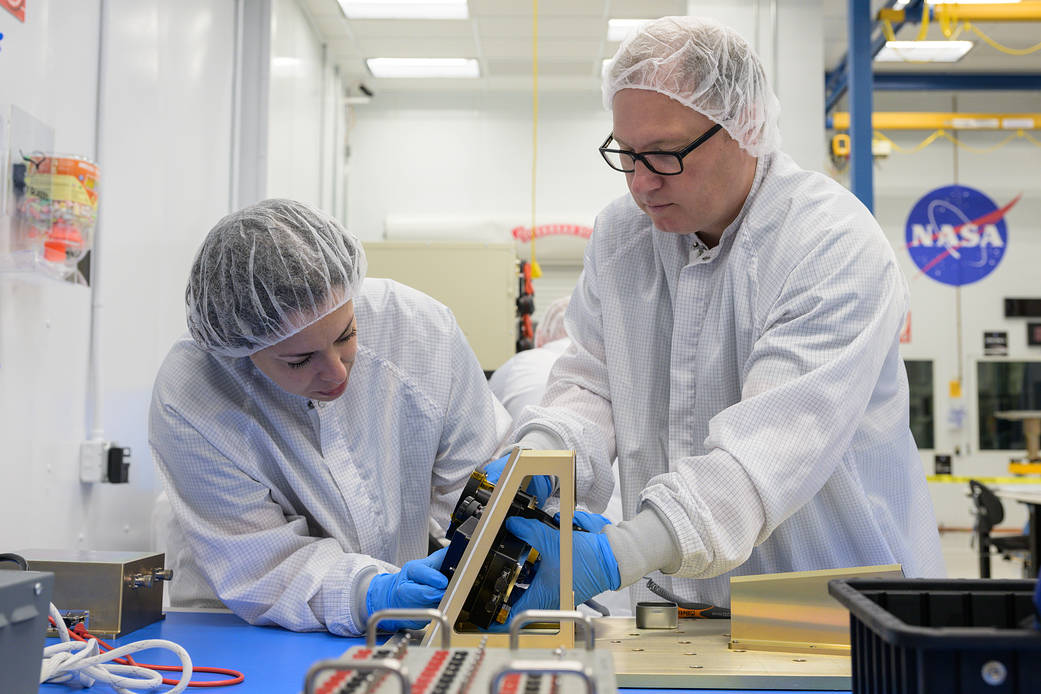
A science instrument that can reveal the composition of lunar soil has arrived at NASA’s Johnson Space Center in Houston in preparation for integration into NASA’s Volatiles Investigating Polar Exploration Rover (VIPER). VIPER is scheduled to be delivered to the Moon’s South Pole in late 2024 by Astrobotic’s Griffin lander as part of the Commercial Lunar Payload Services initiative.
The Near-Infrared Volatiles Spectrometer System (NIRVSS) instrument (pronounced “nervous”), features a spectrometer – a device that looks at light emitted or absorbed by materials to help identify their composition. In lunar soil, that will mean detecting which types of minerals and ices are present, if any. Scientists predict NIRVSS might detect frozen water ice, carbon dioxide, ammonia, and methane. NIRVSS also has the ability to determine the nature of any hydrogen it might encounter. On the Moon, hydrogen could belong to water molecules or to its close molecular cousin hydroxyl, or just exist as hydrogen atoms – any of which could be a useful resource to help enable long-term human exploration of the Moon and other parts of deep space. Knowing the nature of the Moon’s hydrogen also speaks to the origin of the hydrogen itself, and could provide insight into the origin and evolution of water on the Moon.
“It’s great to see NIRVSS safely made its trip to Johnson from Ames, where we’ve spent many months designing, building, and testing – it’s a great step forward, ever closer to collecting science data on the Moon,” said Tony Colaprete, VIPER project scientist and NIRVSS principal investigator at NASA’s Ames Research Center in California’s Silicon Valley, where the VIPER mission is managed. “Of the four science instruments, NIRVSS was scheduled to – and needed to – arrive first because it sits down in the belly of the rover.”
The arrival of NIRVSS is one of many early build tasks the VIPER team is crossing off their lists in preparation for the rover’s construction, which begins in early 2023. In the meantime, teams at NASA Ames, NASA’s Kennedy Space Center in Florida, and Honeybee Robotics in Altadena, California, will continue testing and checkouts of the Neutron Spectrometer System (NSS), Mass Spectrometer Observing Lunar Operations (MSolo), and The Regolith and Ice Drill for Exploration of New Terrains (TRIDENT) respectively. A team at NASA Ames will continue developing the rover flight software that will be used to interactively operate the rover and conduct science in near-real time from Earth.

























